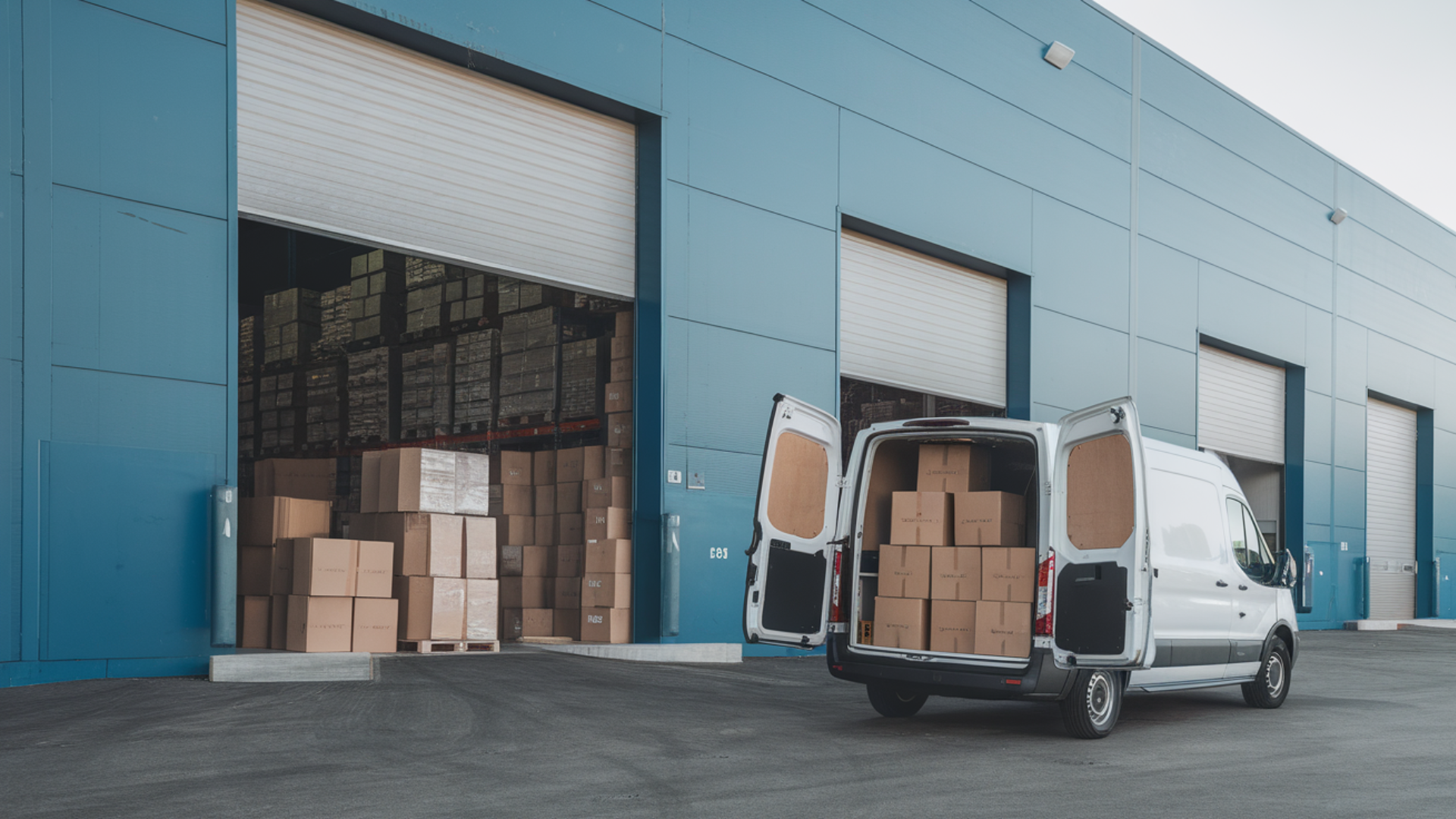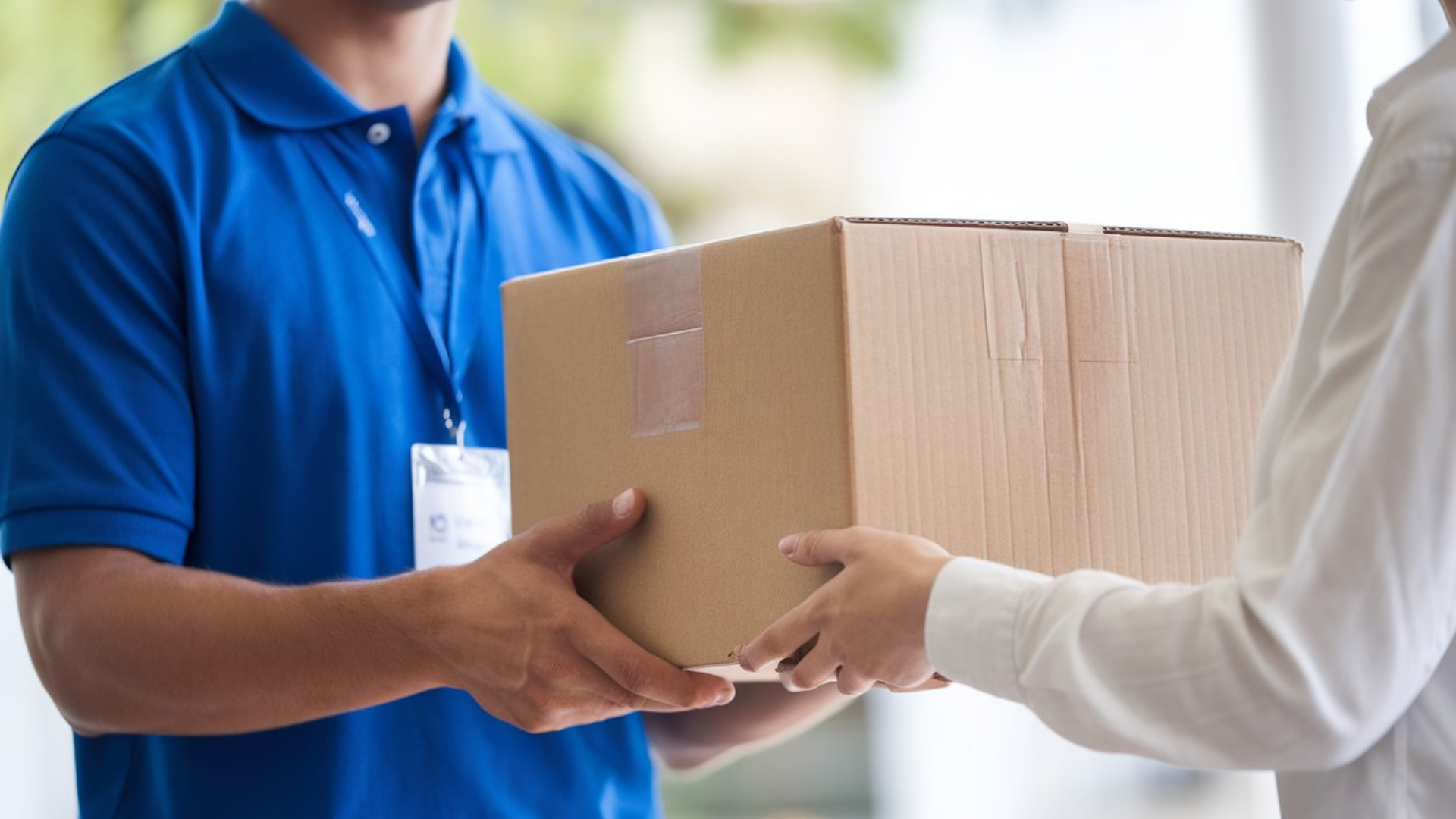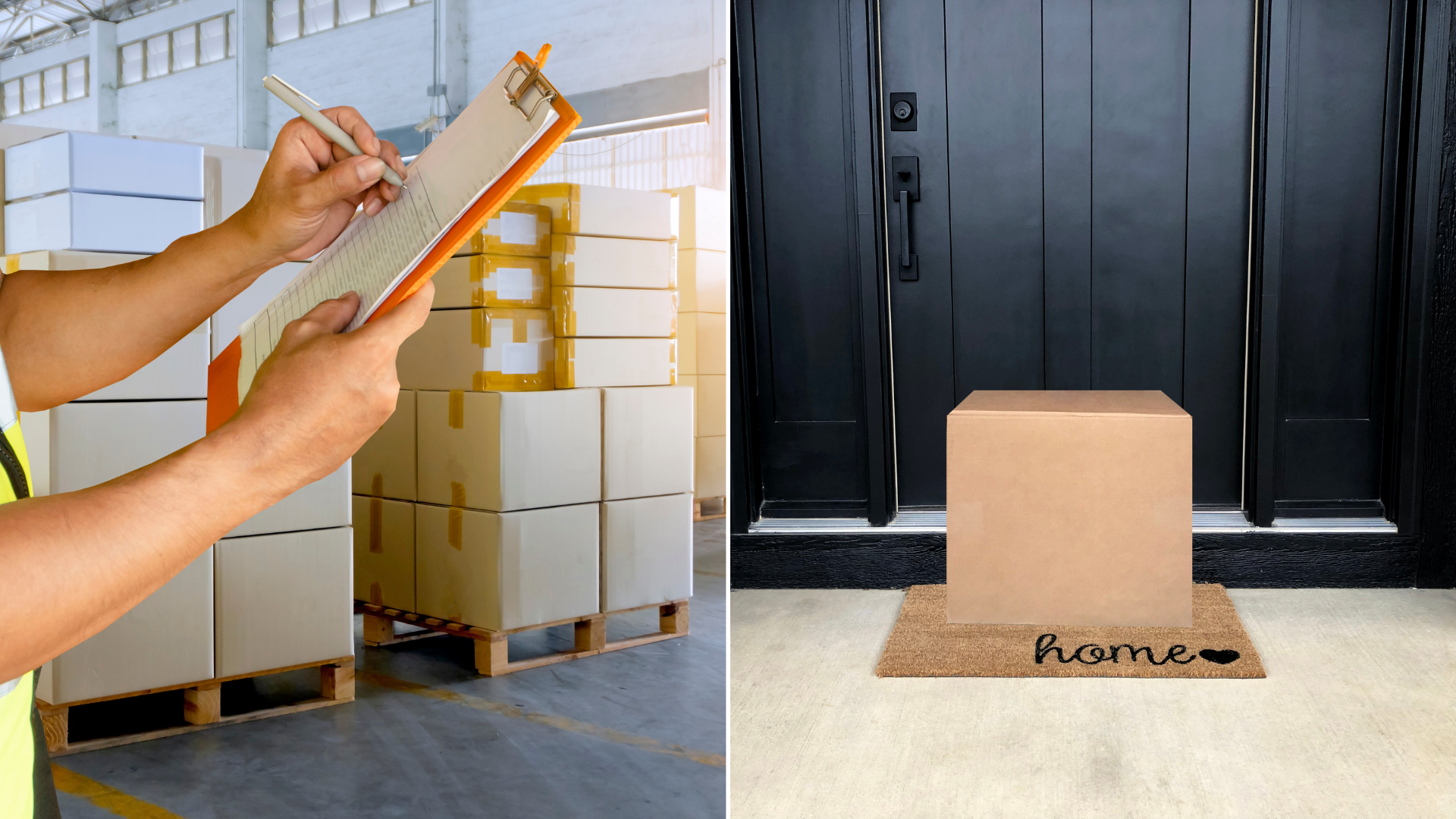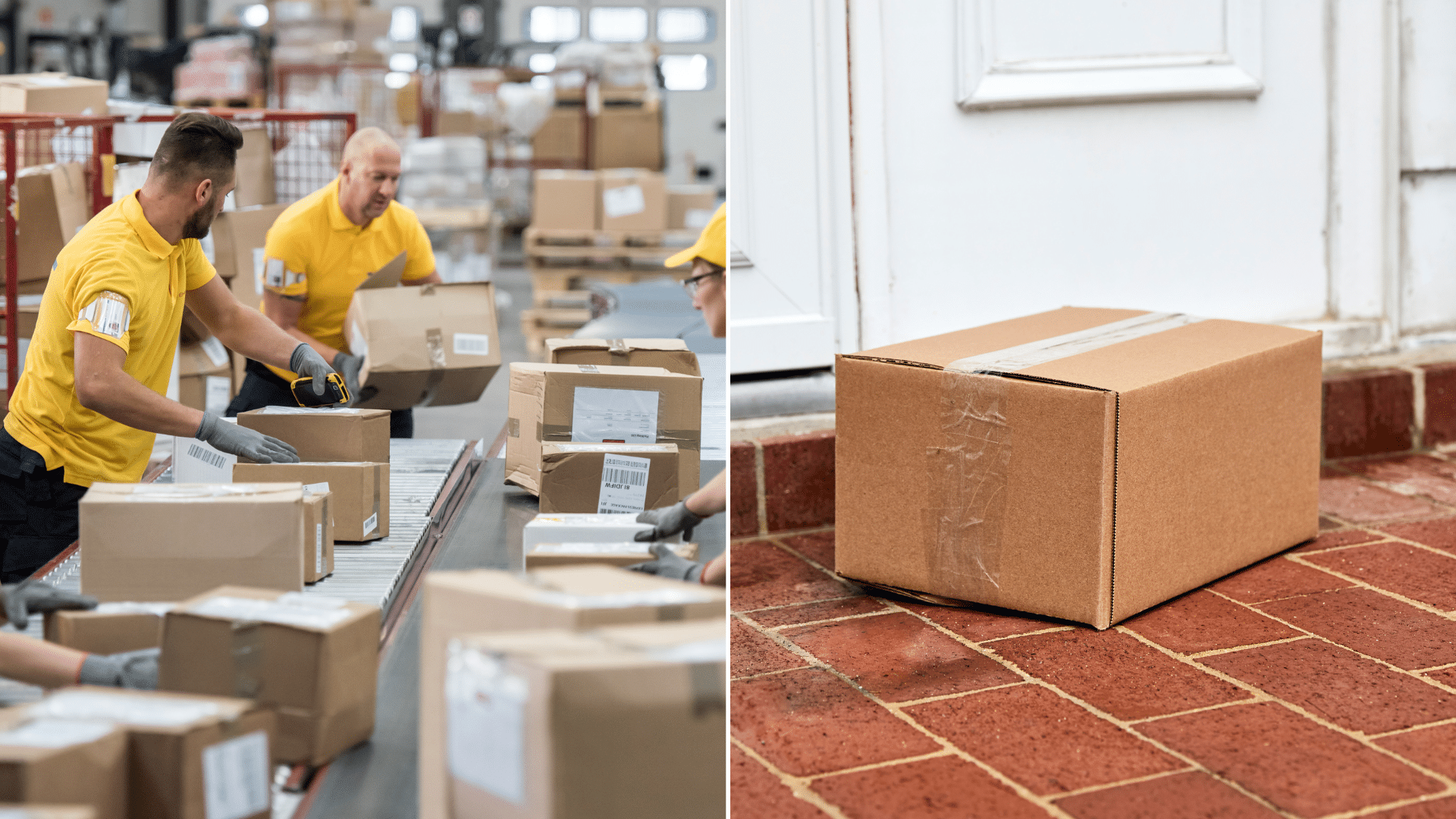I often hear people use the words “shipping” and “delivery” as if they mean the same thing, but they don’t.
When I first started paying attention to online orders, I realized there’s a big difference between the two, and many people wonder what’s the difference between shipping and delivery.
Shipping is all about when your package leaves the seller or warehouse and begins its journey with a carrier. Delivery is the final step when that package actually arrives at your door.
Knowing this difference makes tracking orders much easier and helps avoid confusion about dates.
In this post, I’ll explain shipping vs delivery in simple terms so you can understand how each step works and what to expect when you order something online.
What’s the Difference Between Shipping and Delivery?
To understand what’s the difference between shipping and delivery, we need to look at each step on its own. Let’s start with shipping.
What is Shipping?

Shipping is the process that starts when a package leaves the seller or warehouse and begins its journey to the customer.
It usually involves moving the order through carriers like UPS, FedEx, or USPS, and can include trucks, planes, or even ships depending on the distance.
Shipping covers the “in transit” stage, where your package moves between facilities and hubs before it reaches your local area.
It’s the step that connects sellers to buyers across towns, states, or even countries. Simply put, shipping is the travel part of the order before the final handoff for delivery.
What is Delivery?

Delivery is the final step in the order process, when a package actually reaches the customer.
After shipping moves the order through carriers and hubs, delivery happens once the package arrives in the local area.
From there, a driver or courier takes it “out for delivery” and brings it directly to your home, office, or pickup point.
Delivery focuses on the promised date and time when the order is handed over to you. It’s the part customers look forward to most, because it means the waiting is over and the product is finally in their hands.
Shipping vs. Delivery: Key Differences
I’ve noticed that people often mix up shipping and delivery, but they are not the same.
1. Timing
Shipping begins the moment an order leaves the seller or warehouse. It’s the stage when the carrier picks up the package and starts moving it through its network.
Delivery, on the other hand, is the final stage when the package reaches the customer.
The shipping timeline shows when a product is in transit, while the delivery date marks when it actually arrives at your door.
2. Process
Shipping is about transportation over long distances. It may include movement between warehouses, hubs, and carriers using trucks, planes, or ships.
Delivery is more localized, often called the “last mile.” This is when a driver or courier takes the package from the local facility and brings it directly to the customer’s home, office, or pickup point.
3. Costs
Shipping costs are usually based on package weight, dimensions, and distance. These charges cover the bulk movement of goods from the seller to the destination city or country.
Delivery costs, however, often reflect last-mile expenses, which can be higher per stop because of fuel, time, and labor involved. That’s why companies sometimes charge extra for home or scheduled delivery services.
4. Responsibility
Shipping is handled by carriers, freight companies, or fulfillment centers. They are responsible for moving the package across regions or borders.
Delivery is managed by local couriers, postal workers, or service partners who make sure the order is handed to the customer.
While both are connected, each stage involves different teams and accountability, which is why tracking separates “shipped” from “out for delivery.”
Shipping vs. Delivery: Dates & Statuses
Many people mix up shipping dates and delivery dates, but they mean different things. Below is a simple breakdown with examples:
| Term | What It Means | Example |
|---|---|---|
| Shipping Date | The day the package is sent out by the seller/carrier | Order ships on June 5 |
| Delivery Date | The day the package is expected to reach the customer | Delivery scheduled for June 8 |
| Status Updates | Tracking milestones showing progress | “In transit,” “Out for delivery,” “Delivered” |
This clarity helps customers know exactly when their order leaves and when to expect it at their door.
Role of Shipping and Delivery in Logistics and Retail

Shipping and delivery are two connected steps that keep products moving smoothly from sellers to buyers. Both play unique roles in logistics and retail.
Role of Shipping
- Moves products from warehouses or suppliers to different regions or countries
- Connects sellers with carriers and global supply chains
- Ensures bulk goods are transported efficiently and on time
- Helps retailers manage inventory by restocking stores or distribution centers
Role of Delivery
- Handles the “last mile,” bringing products directly to customers
- Impacts customer satisfaction through speed and reliability
- Requires strong coordination with local couriers or postal services
- Shapes how customers view a brand’s overall service quality
Together, shipping and delivery form the backbone of modern logistics, helping retailers meet customer expectations and build trust.
Examples of Shipping and Delivery by Industry
Different industries handle shipping and delivery in their own way, but the difference between the two stages is always clear.
- E-commerce: Products ship from a central warehouse and are delivered by local couriers to the customer’s doorstep.
- Furniture & Appliances: Large items ship through freight carriers, then delivery is scheduled with setup or installation at home.
- Grocery & Food Delivery: Shipping is minimal since goods move locally, while delivery happens the same day, often within hours.
- Retail Restocking: Products ship in bulk from suppliers to stores, then delivery is completed when customers purchase and take the items home.
These examples show how shipping covers the journey, while delivery is the final handoff across industries.
Conclusion
I’ve learned over time that shipping and delivery may sound similar, but they’re not the same.
Shipping starts the moment a package leaves the seller or warehouse and moves through the carrier’s network. Delivery is the final step when it actually reaches your doorstep.
Knowing what’s the difference between shipping and delivery has helped me set the right expectations and avoid confusion when tracking orders.
If you want more tips like this, check out my other blogs where I share simple advice on shipping timelines, delivery options, and keeping costs down.
Frequently Asked Questions
Can shipping and delivery happen on the same day?
Yes, if a product is local or the seller offers same-day services. In this case, shipping and delivery may be completed within hours.
Why do some orders show multiple shipping dates?
This happens when an order is split into separate packages. Each package has its own shipping date, but all will have delivery dates.
Can I change my delivery address after shipping has started?
Sometimes. Many carriers let you update the delivery address for a small fee, but it depends on timing and location.















